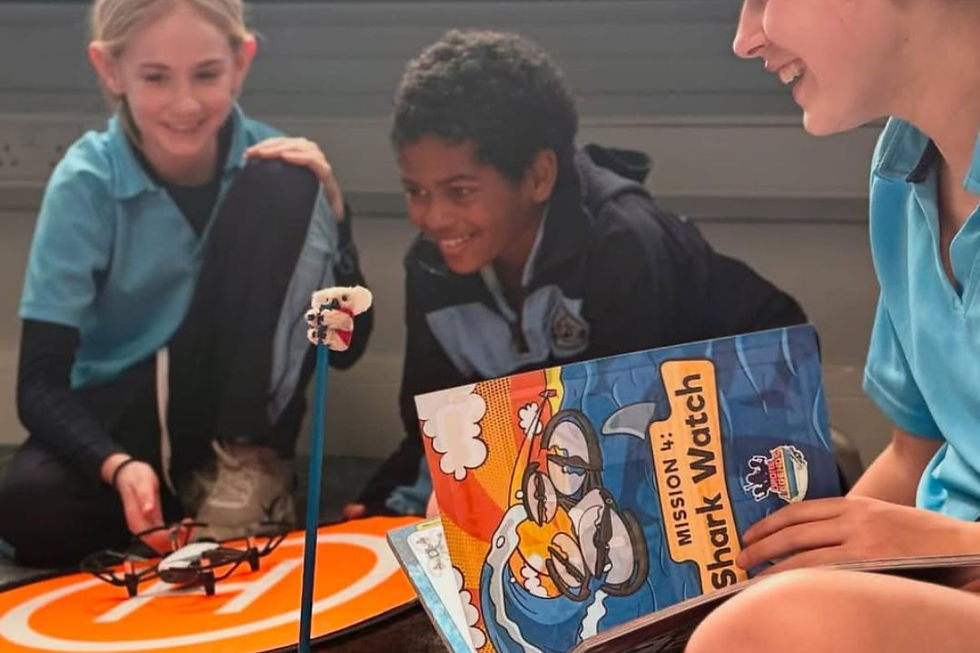Harness the Power of Drones in Education
- Heather Long
- Aug 15
- 3 min read
Updated: Aug 17

Imagine a classroom buzzing with excitement as students launch tiny flying machines into the air. Drones are no longer just toys or gadgets for tech enthusiasts—they are transforming education in thrilling ways! If you’re curious about how drone-based education programs can ignite curiosity, boost STEM skills, and prepare young minds for the future, you’re in the right place. Let’s dive into the world of drones and discover how they’re reshaping learning for K-12 schools and homeschooling families.
Why Drone-Based Education Programs Are a Game Changer
Drones bring a fresh, hands-on approach to learning that textbooks alone can’t match. They combine technology, engineering, and creativity in a way that sparks genuine interest. When students get to pilot drones, they’re not just playing—they’re learning physics, math, and problem-solving skills in real time.
Here’s why drone-based education programs stand out:
Engagement: Flying a drone is fun! It captures attention and keeps students motivated.
Practical STEM: Concepts like aerodynamics, coding, and electronics come alive.
Collaboration: Many drone activities encourage teamwork and communication.
Career Prep: Drones are used in industries like agriculture, filmmaking, and emergency services. Early exposure opens doors to future jobs.
Plus, drones are adaptable. Whether you’re in a classroom, a gym, or a backyard, drone lessons can fit your space and schedule.
Building Skills with Drone-Based Education Programs
So, what skills do students actually develop through drone programs? The list is impressive and practical:
Critical Thinking and Problem Solving
Students learn to troubleshoot drone malfunctions or navigate obstacles. This builds resilience and analytical skills.
Coding and Programming
Many drones can be programmed to follow specific routes or perform tasks. This introduces students to coding languages and logic.
Math and Physics in Action
Calculating flight paths, understanding lift and thrust, and measuring distances make abstract concepts tangible.
Creativity and Innovation
Designing drone missions or capturing aerial photos encourages creative thinking.
Safety and Responsibility
Operating drones safely teaches respect for rules and awareness of surroundings.
By integrating these skills, drone-based education programs create a well-rounded learning experience that’s both fun and meaningful.
How to Get Started with a Drone Education Curriculum
Ready to bring drones into your learning environment? The key is choosing the right curriculum that fits your goals and resources. A well-designed drone education curriculum offers structured lessons, safety guidelines, and assessment tools.
One excellent resource is the drone education curriculum provided by Drone Legends. It’s standards-aligned and funding-friendly, making it easier for schools and families to adopt.
Here’s a simple roadmap to get started:
Research and Select Curriculum: Look for programs that match your students’ age and skill levels.
Invest in Quality Equipment: Choose drones that are durable, easy to operate, and suitable for beginners.
Train Educators: Teachers and parents should familiarize themselves with drone operation and safety.
Plan Lessons: Integrate drone activities with existing subjects like science, math, and technology.
Create a Safe Space: Ensure there’s enough room for flying and clear safety protocols.
Engage Students: Use challenges, competitions, and projects to keep enthusiasm high.
Starting small with pilot programs can help you refine your approach before expanding.
Overcoming Challenges in Drone-Based Learning
Of course, introducing drones into education isn’t without hurdles. But don’t worry—these challenges are manageable with the right strategies.
Cost Concerns: Drones and accessories can be pricey. Look for grants, partnerships, or shared resources to ease the financial load.
Safety Issues: Establish clear rules, supervise flights, and use beginner-friendly drones with safety features.
Technical Difficulties: Provide training and support for educators and students to build confidence.
Curriculum Integration: Align drone lessons with educational standards to ensure relevance and acceptance.
Space Limitations: Use simulators or indoor-friendly drones when outdoor space is limited.
By anticipating these challenges, you can create a smooth, rewarding drone learning experience.
Inspiring the Next Generation with Drones
At the heart of drone-based education programs is the goal to inspire. When students see technology in action, they start dreaming bigger. They imagine themselves as engineers, pilots, scientists, or entrepreneurs.
Drones offer a unique blend of excitement and education that fuels passion for STEM fields. They encourage exploration, creativity, and a growth mindset. And best of all, they prepare young learners for a future where technology plays a central role.
So, why wait? Embrace the power of drones and watch curiosity take flight!
Harnessing drones in education is more than a trend—it’s a powerful tool to unlock potential. Whether you’re a teacher or a homeschooling parent, integrating drone-based education programs can transform how students learn and grow.
Have questions or ready to launch a drone curriculum at your school? Contact us today.












Comments